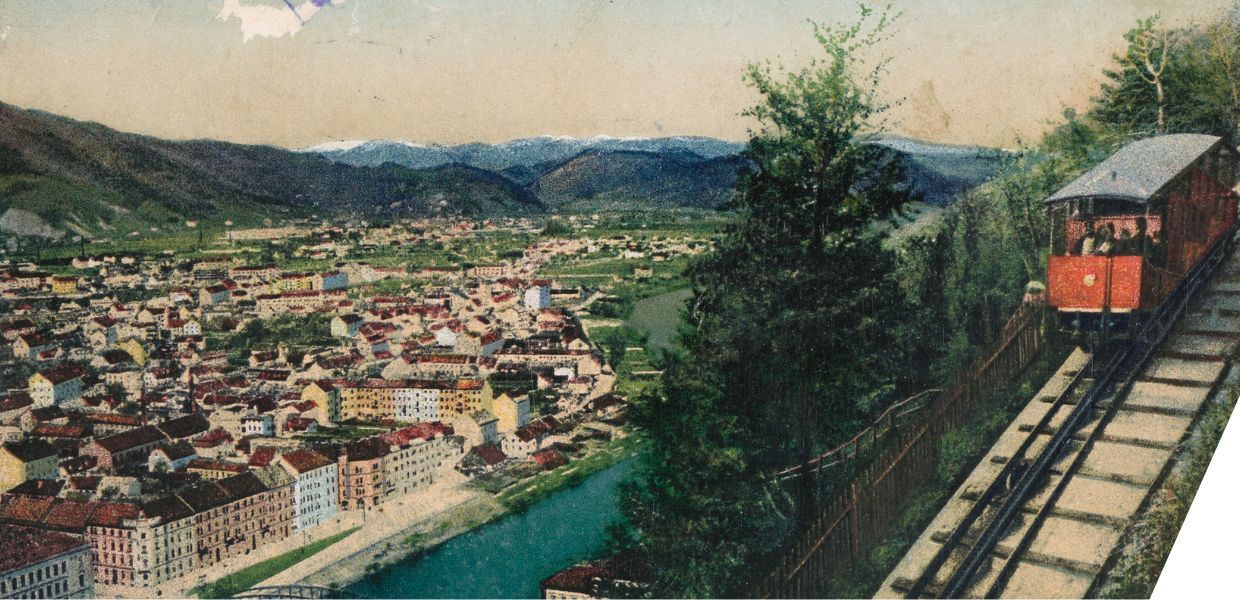3. Discover European Capitals of Culture
The European Capitals of Culture initiative provides a year-long celebration of art and culture in three cities across Europe each year. This year, it’s Bodø, Norway, Tartu, Estonia, and Bad Ischl, Austria. Follow the links to explore the programme for each city’s activities.
Not only does the initiative highlight the richness and diversity of cultures in Europe and fosters a sense of belonging to a common cultural area, it also contributes to regenerating cities, raising their profiles and boosting tourism.
Europeana’s Digital Storytelling Festival programme includes speakers reflecting on activities as part of Norway and Austria’s Capitals of culture events - check out the programme and register!
You can also explore items from the Europeana website in the ‘European Capitals of Culture' gallery.
4. Experience UNESCO World Heritage Journeys in the European Union
World Heritage Journeys is an initiative by UNESCO, in collaboration with National Geographic and local heritage and tourism managers, to showcase World Heritage destinations and help travellers experience them in ways that protect and support their outstanding value and the local communities that sustain them.
Do you want to explore ‘Ancient Europe’, ‘Romantic Europe’, ‘Royal Europe’ or ‘Underground Europe’? Choose your theme then discover the sites and even explore suggested itineraries.
You’ll discover hidden gems to which increased visitation can help support conservation and sustainable development, and get insider tips for experiencing popular iconic sites more deeply, in ways that avoid the crowds and protect their heritage.
5. Take a train ride
Travel guide Lonely Planet gives you ‘10 amazing journeys for 2024’, from a fairly short (113 km) but impressive trip through northern England, to a longer (563 km) journey from Munich to Venice on the Brenner Railway, the first service to cross the Alps in the 1860s.
Interrail gives you a variety of suggested routes and itineraries if you’ve got a couple of weeks to travel around Europe. Italian Rivera? An Adriatic Summer? Or the classic west to east journey on the Orient Express route?
6. Lace up your walking boots
Europe has a long history of destinations for pilgrimages. National Geographic shares its ‘Top 10 pilgrimage routes around the world’, of which six are in Europe. From the 35 km St Finbarr’s Way in Ireland, to the 245 km Via Coloniensis uniting the former Roman cities of Cologne and Trier in Germany, and the 148 km Pemont Route connecting St-Jean-Pied-de-Port and the holy site of Lourdes in France. Or for a truly epic journey, follow the Via Francigena, a 1,931 km route connecting Canterbury, UK, to Rome via France, the Swiss Alps and the Italian Apennines, passing churches and shrines devoted to St Francis.
7. Join the Digital Storytelling Festival
Take a cultural trip with Europeana’s Digital Storytelling Festival, a free two-day online event taking place on 21-22 May. With speakers from across Europe and beyond, you’ll hear about inspiring cultural heritage storytelling activities that will expand your horizons. You can also take part in a creative writing workshop on the theme of journeys - and see if you can make it to the finishing line in our first ever Digital Storytelling Festival pub quiz!


